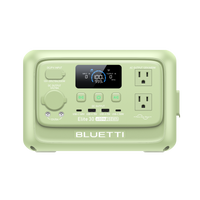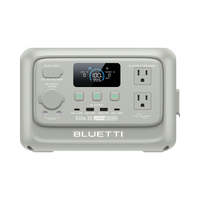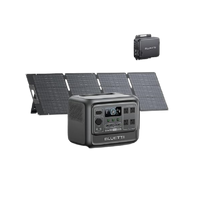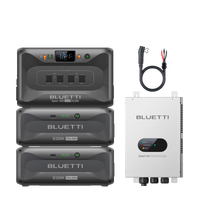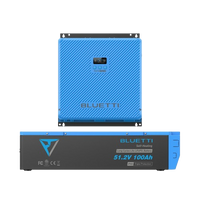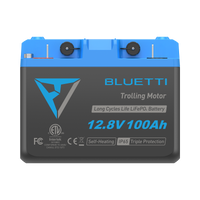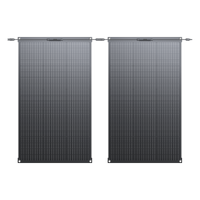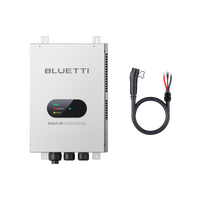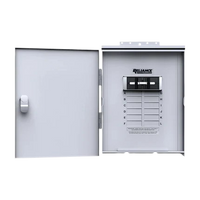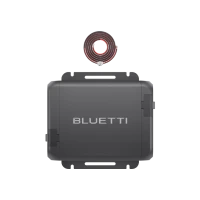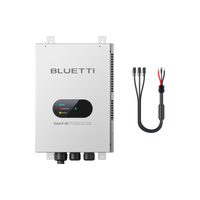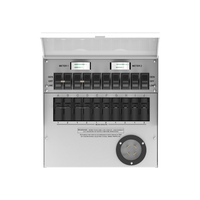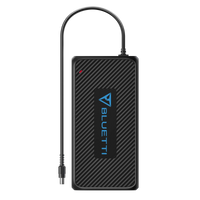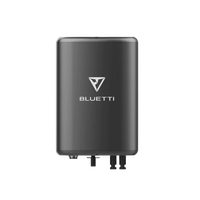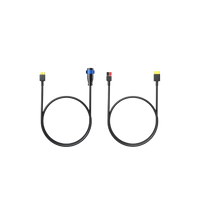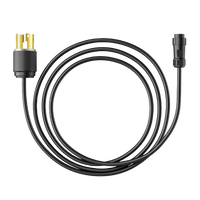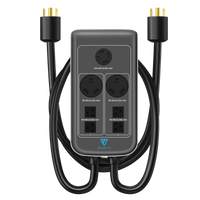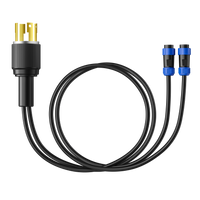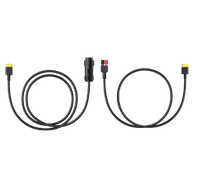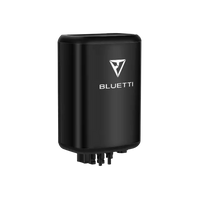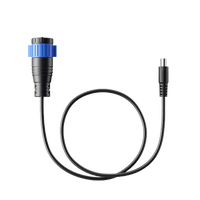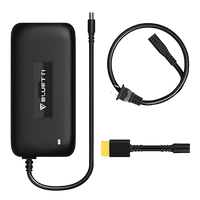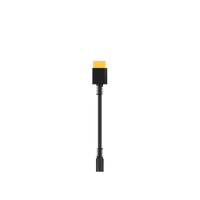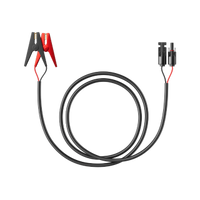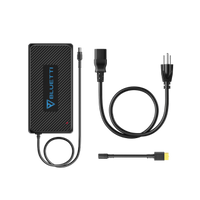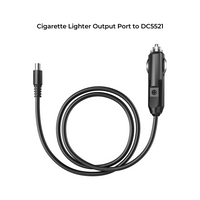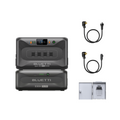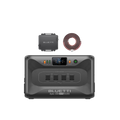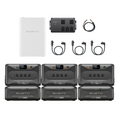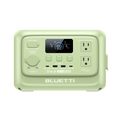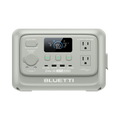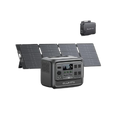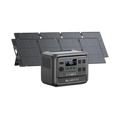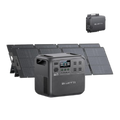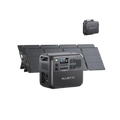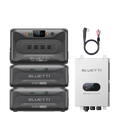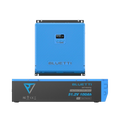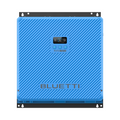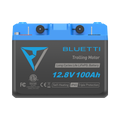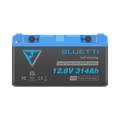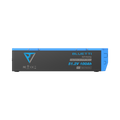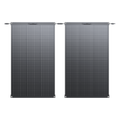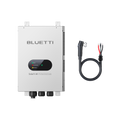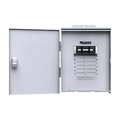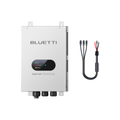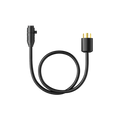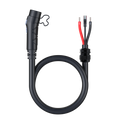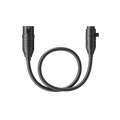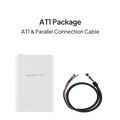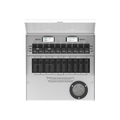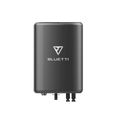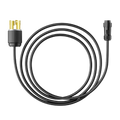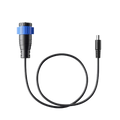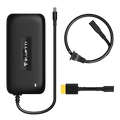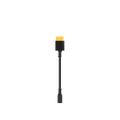Si vous vous intéressez aux énergies renouvelables, aux véhicules électriques ou à l'électronique de puissance, vous avez peut-être déjà entendu parler de convertisseurs CC/CA ou d'onduleurs. Il s'agit d'un appareil qui transforme le courant continu (CC) en courant alternatif (CA) pour fournir l'électricité. L'électricité peut être distribuée de deux manières différentes : en courant continu (CC) et en courant alternatif (CA), chacune présentant ses propres avantages et inconvénients. Dans cet article, nous allons vous expliquer ce que sont le CC et le CA, leurs différences, comment passer de l'un à l'autre, pourquoi effectuer une telle conversion et quand un onduleur CC/CA est nécessaire.
Comment fonctionne le DC ?
Le courant continu (CC) est un type d'énergie électrique caractérisé par la circulation des charges électriques dans une seule direction. Il est produit au niveau d'un générateur, où une bobine de fil tourne à l'intérieur d'un champ magnétique. Grâce à ce mouvement, les électrons circulent de manière continue dans une seule direction, du générateur à travers le circuit, alimentant les appareils sur leur passage, puis revenant en arrière pour fermer le circuit.
Des facteurs tels que le frottement et la chaleur à l'origine des étincelles, ainsi que les pertes d'énergie, peuvent nuire à l'efficacité de la production d'énergie en courant continu. Le courant produit est directement proportionnel à la vitesse de rotation et doit être constant pour éviter que les appareils ne grillent ou ne fonctionnent mal.
Dans les premières années où le courant continu a été intégré au réseau, plusieurs fournisseurs d'électricité produisaient leurs propres tensions, que les entreprises utilisaient pour faire fonctionner différents appareils à des tensions différentes ; cela appartient désormais au passé avec les systèmes électriques modernes.
Comment fonctionne la climatisation ?
Le courant alternatif (CA) désigne simplement une forme d'énergie électrique définie par un flux d'électrons oscillant dans un fil conducteur. En effet, la plupart des systèmes de production d'électricité en courant alternatif utilisent un aimant qui tourne à l'intérieur d'une bobine de fil conducteur. Lors de sa rotation, ses pôles repoussent et attirent alternativement les électrons de la bobine, générant ainsi un courant alternatif de forme sinusoïdale.
Sa flexibilité en courant alternatif réside dans sa capacité à moduler l'écart entre les crêtes et les creux de la sinusoïde, adaptant ainsi le courant final aux besoins. Cette flexibilité permet à des appareils fonctionnant sous différentes tensions d'être alimentés par une seule source de courant alternatif. Toutefois, un inconvénient majeur est la perte de puissance lors de la conversion du courant alternatif en courant continu au point d'utilisation.
Différences entre le courant continu et le courant alternatif

Il existe deux types fondamentaux de courant électrique : le courant continu (CC) et le courant alternatif (CA). Le premier transporte un flux continu d'électrons dans une direction, oscillant avec l'autre, tandis que le second alterne avec l'oscillation des électrons. Contrairement au courant continu, dont la fréquence est nulle du fait de son flux unidirectionnel, l'oscillation du courant alternatif est définie par une fréquence.
Le facteur de puissance du courant alternatif (CA) varie entre 0 et 1, tandis que celui du courant continu (CC) est toujours nul. Les alternateurs produisent du CA, et le CC est produit par des cellules photovoltaïques, des générateurs et des batteries. Une charge en CC est toujours résistive, alors qu'en CA, elle peut être capacitive, inductive ou résistive.
Graphiquement, le courant continu (CC) est représenté par une ligne droite, indiquant que son amplitude et son sens restent constants. En revanche, le courant alternatif (CA) peut être représenté par une onde sinusoïdale, carrée ou triangulaire. Un convertisseur appelé redresseur transforme le CA en CC, et l'inverse est réalisé par un onduleur.
Le courant alternatif est répandu dans les équipements industriels et les appareils ménagers, tandis que le courant continu est courant dans les petits appareils électroniques.Des pertes peuvent survenir lors du transport sur de longues distances, tandis que des pertes sont également subies sur les systèmes CA fonctionnant en courant continu haute tension (CCHT) sur de longues distances.
Comment convertir du courant continu en courant alternatif ?
Un onduleur est un appareil qui transforme le courant continu (CC) en courant alternatif (CA). La tension alternative produite a un niveau de tension opposé à celle du redresseur, utilisé pour convertir le CA en CC. Les onduleurs les plus courants aujourd'hui sont électroniques.
Le principe de conversion de puissance entre ces deux formes permet d'alimenter facilement n'importe quel appareil. Leur fonctionnement repose sur la commutation progressive du courant alternatif (CA) vers le courant continu (CC), grâce aux condensateurs et inductances internes. La tension d'alimentation, utilisée par l'équipement, est ensuite mise à l'échelle par un transformateur onduleur. Il est important de noter que, la conversion entraînant généralement des pertes d'énergie, la puissance de sortie est inférieure à la puissance d'entrée.
Dans la plupart des cas, les onduleurs sont généralement volumineux et lourds, surtout ceux qui intègrent des batteries pour fonctionner de manière autonome. Ils produisent également beaucoup de chaleur qu'il faut évacuer afin d'éviter toute surchauffe. Cela contribue à augmenter leur taille et leur poids. Cependant, quels que soient leur taille et leur poids, les onduleurs sont des éléments essentiels de nos installations électriques.
Pourquoi la conversion CC/CA est-elle nécessaire ?
Les deux principales raisons qui justifient la conversion du courant continu (CC) en courant alternatif (CA) sont le stockage et la stabilité de la tension. Contrairement au CA, le CC peut être stocké, ce qui le rend idéal pour le stockage de l'énergie électrique. C'est pourquoi la grande majorité des appareils numériques utilisent le CC, la plupart étant alimentés par une énergie stockée.
Un autre point tout aussi important à mentionner concerne l'uniformité de la tension. Une alimentation en courant continu (CC) délivre une tension uniforme, contrairement à une alimentation en courant alternatif (CA), ce qui peut poser problème à certains appareils, comme les ampoules LED qui nécessitent une tension stable pour fonctionner correctement. Cependant, nos principaux réseaux électriques fonctionnent actuellement presque entièrement en courant alternatif en raison de son bon rendement pour le transport sur de longues distances.
Par conséquent, la conversion du courant continu (CC) en courant alternatif (CA) est essentielle pour utiliser l'énergie stockée ou, plus précisément, pour intégrer l'énergie d'une source CC, comme des panneaux solaires, dans un réseau électrique fonctionnant en CA. Cette conversion vise à rendre l'énergie fournie compatible et ainsi permettre diverses applications de l'électricité pour une utilisation efficace.
Articles connexes : Tout ce que vous devez savoir sur les convertisseurs CC/CA
Qu'est-ce qu'un chargeur CC-CC ? Et comment fonctionne-t-il ?
Ai-je besoin d'un convertisseur CC/CA pour un onduleur ?
Si votre source d'alimentation est solaire ou basée sur une batterie, et nécessite donc du courant continu (CC), tandis que vos appareils fonctionnent en courant alternatif (CA), un convertisseur CC/CA, également appelé onduleur, est indispensable. L'onduleur transforme le courant continu en courant alternatif, le rendant ainsi compatible avec votre source d'alimentation et vos appareils. Ce processus est particulièrement important pour les habitations ou entreprises non raccordées au réseau électrique et utilisant des batteries externes.
Quand avez-vous besoin d'un convertisseur CC/CA ?
Les onduleurs, ou plus précisément les convertisseurs CC/CA, sont omniprésents dans notre vie quotidienne. Ils constituent un élément essentiel de l'alimentation électrique nécessaire au fonctionnement de tous nos appareils électroniques fonctionnant en courant continu (CC).Lorsque vous chargez votre téléphone ou votre ordinateur portable, vous utilisez un micro-onduleur pour convertir le courant alternatif (CA) de la prise murale en courant continu (CC).
Ainsi, pour alimenter des appareils électroménagers fonctionnant en courant alternatif (CA) à partir d'un panneau solaire ou d'une batterie, un onduleur est généralement nécessaire. Cependant, la plupart des appareils sont conçus pour fonctionner uniquement en courant continu (CC), ce qui rend inutile un convertisseur CC/CA lorsque la source d'énergie est exclusivement en CC, comme dans le cas d'un camping-car ou d'un système hors réseau.
Passons maintenant en revue deux panneaux solaires haut de gamme, utilisant tous deux un onduleur :

- Panneau solaire PV420. Le Panneau solaire BLUETTI PV420 Ce chargeur solaire est robuste et offre un rendement élevé, jusqu'à 23,4 %. Son installation est simple grâce à son support intégré. Durable et résistant aux éclaboussures, il est pliable et donc facile à transporter et à utiliser. Compatible avec la charge solaire rapide de 420 W, il est également doté d'un revêtement en ETFE pour une grande longévité. Il fonctionne parfaitement avec les modèles AC200P, AC200MAX, AC300, AC500 et EP500Pro de la marque BLUETTI.
- Panneau solaire PV350. Une autre excellente option, la BLUETTI PV350Il est fourni avec un support intégré. Son taux de conversion est excellent. Tout comme le PV420, il est pliable, résistant aux éclaboussures, durable et portable. Son installation est simple et rapide. Il est parfaitement compatible avec les adaptateurs AC180, AC200P, AC200MAX, AC300, AC500 et EP500Pro de BLUETTI. Malgré une puissance légèrement inférieure à celle du PV420, ses performances restent optimales.
Réflexions finales
La conversion du courant continu (CC) en courant alternatif (CA) est un processus essentiel permettant d'utiliser différents types d'électricité à des fins diverses. Un onduleur permet de convertir le courant alternatif en courant continu, et inversement. Ainsi, vous pouvez alimenter vos systèmes, appareils et équipements avec la tension et la fréquence appropriées. Parmi les applications utilisant des sources d'énergie renouvelables telles que les panneaux solaires et les éoliennes pour produire du courant continu, la conversion CC/CA revêt une importance particulière. L'énergie excédentaire peut être stockée dans une batterie et utilisée via un onduleur en cas de besoin. La conversion CC/CA contribue également à améliorer l'efficacité et la fiabilité de votre installation électrique.














